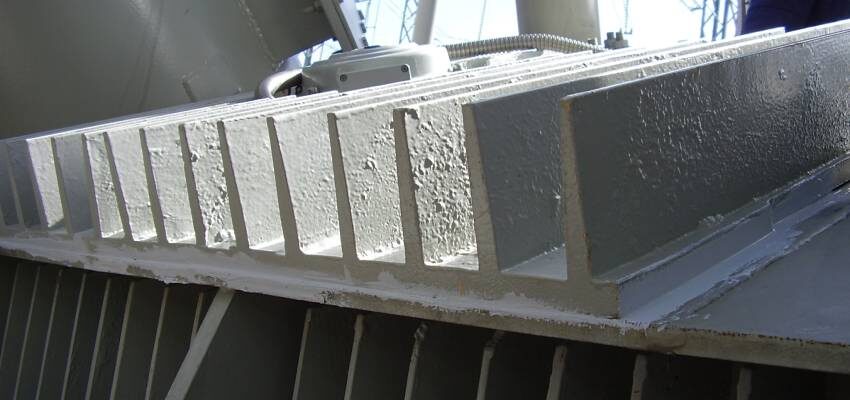
Application of surface-mounted radiators to reduce local heating of ferromagnetic tanks of power transformers
Increased unacceptable local heating of the walls and covers of the ferromagnetic steel tank of power transformers occurs in cases of concentration of magnetic fluxes...
byViktor Ivankov, Anastasia Basova, Ivan Khimyuk

Increased unacceptable local heating of the walls and covers of the ferromagnetic steel tank of power transformers occurs in cases of concentration of magnetic fluxes from magnetic shunts and from multi-ampere leads [1, 2].
To protect tanks from leakage fields of the windings, magnetic shields in the form of packages of electrical steel (shunts) are usually used, which are attached to the surface of flat parts of the tank. There are optimal ratios of the sizes and positions of the shunts with respect to the leakage fields of the windings, which in some cases are difficult to realize due to size limitations or for other reasons. For example, branches with significant currents run parallel to the walls or under the covers of the tanks. At the same time, concentrated magnetic flux from shunts or branches can cause increased local losses and heating.
The design of high-current lead systems is challenging. Traditionally, it is recommended to use a two-layer low voltage winding with an exit of the ends at the top of it, connection of the phase ends of the windings directly to the corresponding inputs. It is practiced, if possible, to increase the distance between the branch and the surface of the cover; a close mutual arrangement of leads of different phases; separation of the lead into parallel wires. Electromagnetic shielding is also used with copper or aluminium plates, which are attached at a certain distance from the protected parts. In [1, 2], the implementation of an insert into the tank cover made of non-magnetic steel with high electrical resistivity is considered. Additionally, packages of limited dimensions made of electrical steel, the so-called magnetic flux dividers, are installed on the surface of the non-magnetic covers. They lead to fragmentation of eddy current circuits and a decrease in local losses in non-magnetic inserts.







